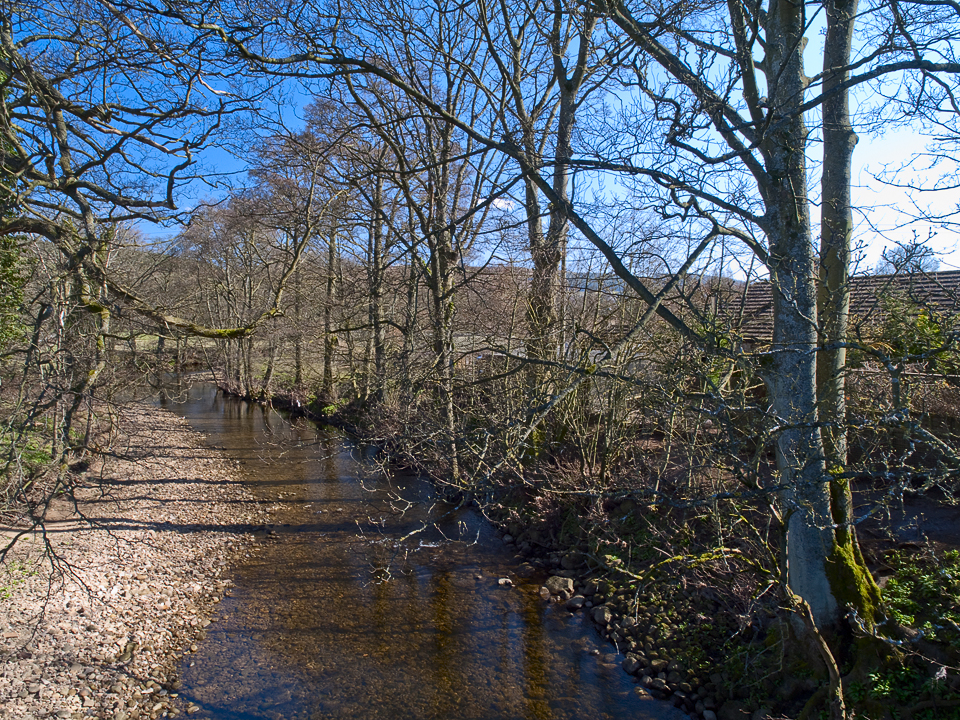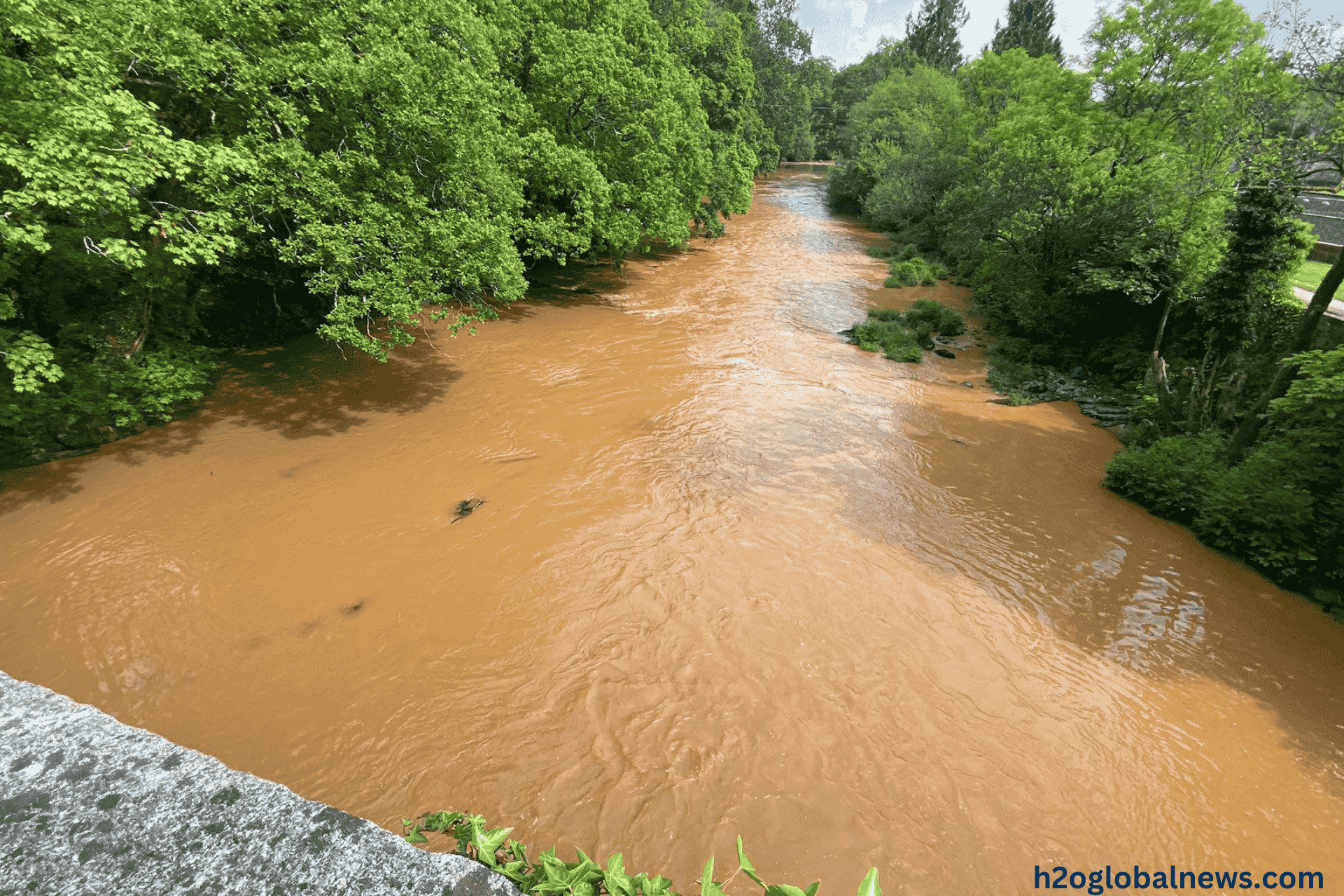Efforts to minimize air pollution have resulted in several environmental benefits, such as cleaner air and lower health risks. However, one unanticipated result has been a noticeable alteration in the color of rivers. Many waterways, in particular, have begun to turn brown, raising questions and concerns. This phenomenon is primarily caused by changes in the balance of natural processes and water chemistry, pushed by reduced air pollution levels.
Why Are Rivers Brown After Air Pollution Reduction?
Brown color in rivers is generated by a higher concentration of dissolved organic matter, which includes degraded leaves, plants, and soil organic carbon.
Here’s how air pollution reduction helps to bring about this change:
- Reducing acid rain improves soil health by retaining nutrients and restoring natural buffering capacity. This promotes the release of organic chemicals into neighboring rivers and streams.
- Improved soil systems lead to higher dissolved organic carbon (DOC) stream levels. DOC gives water a tea-like color, which is commonly mistaken for pollution. However, it is a natural and harmless process.
- Soil ecosystem recovery boosts microbial activity, leading to more efficient organic matter breakdown and release into water systems.
How does Air Pollution Affect Water Pollution
Air pollution negatively impacts river health in several ways.
Reduced sunlight
Less sunlight can penetrate polluted air and reach the Earth’s surface. This impacts the growth of algae and aquatic plants in rivers that provide food and habitat for other organisms. With fewer algae and plant life, the water appears browner in color.
Altered water chemistry
Pollutants in the air eventually fall onto land and into rivers, altering the water’s chemistry. Acid rain, for example, makes rivers and lakes more acidic, which can harm fish and other animals. Mercury and other toxic chemicals may accumulate in river water and sediments, disrupting the aquatic food web.
Eutrophication
Nitrogen oxides and ammonia in the air can make their way into rivers, providing excess nutrients that fuel the overgrowth of algae, known as eutrophication. As algae rapidly multiply and then die off, bacteria work to decompose them, using up oxygen in the water that other animals need. This can lead to “dead zones” in rivers where little aquatic life can survive.
By improving air quality through reduced emissions and pollution controls, we can limit river damage and help restore them to a natural, healthy state with clean, clear water, abundant and diverse plant and animal life, and properly functioning nutrient cycles. The connections between air and water are undeniable, so protecting one ultimately means protecting the other. Cleaner air will lead to cleaner rivers, which means cleaner air. The environment as a whole benefits when we choose to improve either part.
Impact on River Ecosystems
While a change in water color may appear alarming, it has both beneficial and bad consequences for ecosystems.
Positive Effects:
- The presence of DOC offers a food source for aquatic microorganisms, which increases biodiversity in some habitats.
- Healthy soils decrease metal and other pollution flow into rivers.
Negative Effects:
- Brown water absorbs more sunlight, which raises water temperatures and may stress aquatic life.
- Increased DOC can combine with chlorine during drinking water treatment, producing hazardous byproducts.
Air Pollution Reduction and Water Chemistry
The link between air pollution reduction and water chemistry is complex. Reduced sulfur and nitrogen deposition have cascading effects, affecting how rivers interact with their surroundings. While the brown color represents a return to a more natural condition, it also emphasizes how interconnected the air, soil, and water systems are in the environment.
Solutions for Healthier Rivers by Improving Air Quality
To improve river health as air pollution decreases, several solutions could be implemented:
Restoring Riparian Zones
Restoring vegetation along riverbanks or riparian zones can help filter pollutants and sediment from runoff before they enter waterways. Riparian zones also provide habitat for wildlife and shade rivers, regulating water temperature.
Managing Stormwater Runoff
Managing urban stormwater runoff is crucial to reducing pollution in rivers. Solutions include:
- Constructing retention ponds, rain gardens, and bioswales to collect, filter, and slow runoff flow.
- Installing permeable pavement, green roofs, and rain barrels to absorb more rainwater where it falls.
- Sweeping streets and picking up litter to prevent waste from washing into storm drains.
- Educating the public on how individual actions can impact water quality.
Monitoring and Regulating Pollution
Continued monitoring and regulation of industrial, agricultural, and municipal pollution sources is key to sustaining clean rivers. This could include:
- Testing water regularly for contaminants like nutrients, sediments, heavy metals, and microplastics.
- Enforcing regulations on wastewater treatment, runoff management, and pollution caps.
- Providing incentives for businesses and farmers to reduce pollution and adopt sustainable practices.
Conservation and Restoration Efforts
Protecting and restoring river habitats through conservation efforts will support healthier ecosystems. Steps could include:
- Designating more rivers as protected areas with restrictions on development and pollution.
- Reintroducing native plants, fish, and other wildlife to rivers where populations have declined.
- Removing invasive species, dams, and other obstructions that disrupt the natural flow and function of rivers.
- Collaborating across borders to manage rivers, watersheds,s and pollution sources that cross jurisdictional lines.
With coordinated action across governments, communities, and individuals, solutions exist to ensure cleaner rivers and healthier environments for future generations. However, sustained political will and investments in these solutions are required to make progress.
Conclusion
Clearer air has allowed more sunlight to reach the Earth’s surface, accelerating the growth of aquatic plants and microbes. While the health of our rivers depends on controlling pollution, their aesthetic appeal is suffering as a result. The browning of rivers due to reduced air pollution demonstrates the interconnectedness of our environmental systems. While initially unexpected, this change reflects a positive shift towards healthier soils and ecosystems.
FAQs
1- How does air pollution affect water pollution?
Air pollution contributes to water pollution through atmospheric deposition. Pollutants like sulfur dioxide and nitrogen oxides mix with rain to form acid rain, which alters soil and water chemistry, affecting ecosystems and contaminating waterways.
2- Does reduced air pollution benefit river ecosystems?
Yes, reduced air pollution improves soil health and reduces the runoff of harmful chemicals into rivers. However, increased organic matter can alter water temperature and affect aquatic life.
3- How does acid rain affect rivers?
Acid rain lowers soil pH, slowing the decomposition of organic matter. This limits the amount of dissolved organic carbon that enters rivers, keeping them clearer but harming ecosystems over time.
4- Do brown rivers absorb more heat?
Brown rivers absorb more sunlight due to their color, potentially raising water temperatures and stressing aquatic life sensitive to heat.










